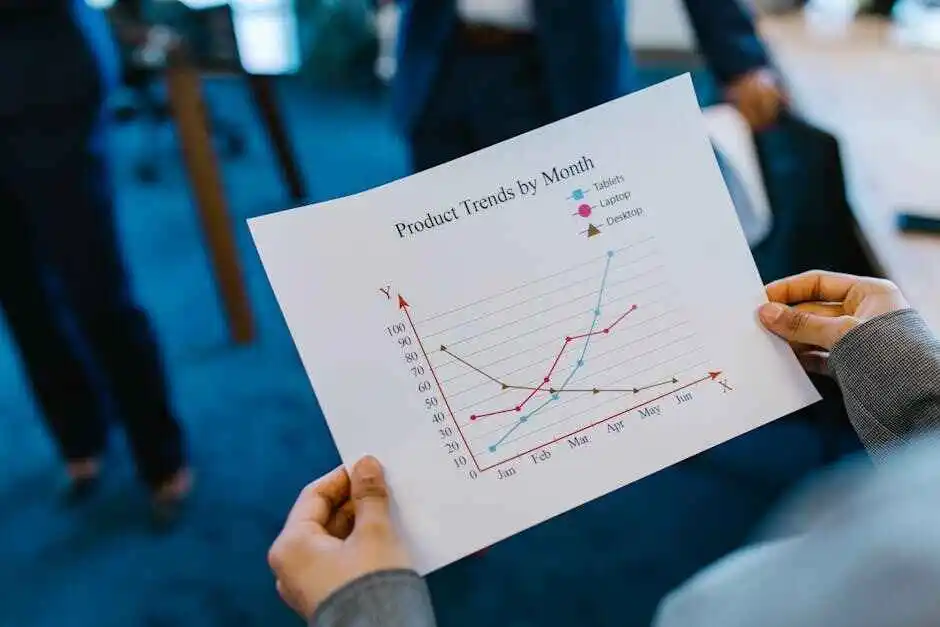
In this article, we explore how AI tools are revolutionizing advertising strategies, maximizing ROI, and driving business growth. From marketing AI software to AI-driven automation, we delve into the cutting-edge technologies reshaping the industry.
Key Points:
- Enhancing Advertising Strategies with AI Tools
- Maximizing ROI through AI-driven Marketing Automation
- Competitor Analysis Redefined with AI
- The Power of Generative AI in Marketing
- Transforming Customer Engagement with AI Voice Assistants
As a Pioneering Marketer, staying ahead of the curve is essential in today's fast-paced marketing landscape. With AI tools revolutionizing advertising strategies, it's time to explore how these technologies can maximize ROI and drive business growth.
Enhancing Advertising Strategies with AI Tools
One of the primary benefits of AI-driven automation in advertising is the ability to analyze vast amounts of data in real-time, allowing for swift adjustments to campaigns and maximizing ROI. By leveraging machine learning algorithms, advertisers can identify patterns and trends that may have gone unnoticed by human analysts, and make data-driven decisions to optimize their ad spend. This level of precision and agility enables businesses to stay ahead of the competition and drive meaningful growth.
AI tools also enable advertisers to create highly targeted and personalized ads that resonate with their intended audience. By analyzing consumer behavior, preferences, and demographics, AI can help businesses craft messaging that speaks directly to their target market, increasing the likelihood of conversion and driving revenue. Moreover, AI-driven automation allows for real-time optimization of ad creative, ensuring that the most effective messaging is being delivered to the right people at the right time.
Furthermore, AI-driven automation can help advertisers overcome the common challenges of ad fatigue and audience saturation. By continuously monitoring and analyzing campaign performance, AI tools can identify when ads are becoming stale or ineffective, and automatically rotate in fresh creative to keep the messaging fresh and engaging. This not only improves the overall ad experience for consumers but also ensures that businesses are getting the most out of their ad spend, driving better ROI and business growth.
Maximizing ROI through AI-driven Marketing Automation
AI-driven marketing automation also enables you to personalize customer experiences at scale, leading to increased engagement and conversion rates. By leveraging machine learning algorithms, you can analyze customer behavior, preferences, and interests to create tailored messages and offers that resonate with your target audience. This level of personalization is particularly effective in email marketing, where AI can help you craft subject lines, content, and calls-to-action that drive higher open rates, clicks, and conversions.
One of the most significant benefits of AI-driven marketing automation is its ability to optimize resource allocation and reduce waste. By automating routine tasks, such as data analysis and campaign optimization, you can free up more time and budget to focus on high-leverage activities like strategy, creativity, and innovation. AI can also help you identify and eliminate underperforming campaigns, allowing you to reallocate resources to areas that drive the greatest ROI.
Moreover, AI-driven marketing automation provides real-time insights and analytics, enabling you to make data-driven decisions and adjust your marketing strategies on the fly. With AI-powered analytics, you can track key performance indicators, such as customer acquisition costs, lifetime value, and return on ad spend, to refine your marketing mix and maximize ROI. This level of agility and responsiveness is critical in today's fast-paced digital landscape, where customer preferences and market trends can shift rapidly.
Competitor Analysis Redefined with AI
Traditional competitor analysis often relies on manual research and data collection, which can be time-consuming and prone to errors. AI-driven competitor analysis, on the other hand, leverages machine learning algorithms to analyze vast amounts of data in real-time, providing actionable insights that would be impossible to obtain through manual means. This enables businesses to stay ahead of the competition by identifying opportunities and threats in the market before they materialize.
With AI-driven competitor analysis, you can gain a deeper understanding of your competitors' strengths and weaknesses, as well as their marketing strategies and tactics. This information can be used to develop targeted campaigns that exploit your competitors' weaknesses and capitalize on their strengths. For instance, AI can help you identify gaps in your competitors' product offerings or service lines, allowing you to develop new offerings that meet the unmet needs of your target audience.
Moreover, AI-driven competitor analysis can help you monitor your competitors' online presence and track their performance metrics in real-time. This enables you to respond quickly to changes in the market and adjust your strategies accordingly. For example, if a competitor launches a new product or service, AI can help you analyze their marketing strategy and adjust your own strategy to stay competitive. By leveraging AI-driven competitor analysis, you can stay one step ahead of the competition and drive business growth.
The Power of Generative AI in Marketing
With the ability to generate high-quality, unique content, generative AI tools are transforming the way marketers approach creative assets. From eye-catching visuals to compelling copy, these tools enable businesses to produce a vast array of marketing materials at unprecedented speeds, freeing up human creatives to focus on high-level strategy and direction. This not only streamlines the content creation process but also allows for rapid experimentation and iteration, ensuring that marketing efforts remain fresh and engaging.
Moreover, generative AI tools can help marketers tap into the latest trends and consumer preferences, generating content that resonates with their target audience. By analyzing vast amounts of data, these tools can identify patterns and insights that human marketers might miss, enabling businesses to craft marketing campaigns that are more targeted, personalized, and effective. This level of precision is particularly valuable in today's competitive marketplace, where relevance and authenticity are key to building brand loyalty and driving conversions.
As the technology continues to evolve, we can expect to see even more innovative applications of generative AI in marketing. For instance, AI-generated content could be used to create immersive, interactive experiences that blur the lines between advertising and entertainment. Or, it could be leveraged to develop highly personalized, dynamic marketing messages that adapt to individual users' behaviors and preferences in real-time. The possibilities are endless, and forward-thinking marketers are already exploring the vast potential of generative AI to stay ahead of the curve and maximize their ROI.
Transforming Customer Engagement with AI Voice Assistants
By leveraging AI voice assistants, businesses can create personalized interactions that build trust and loyalty with their customers. For instance, Phona's technology enables companies to craft bespoke responses that address specific customer needs, fostering a sense of understanding and empathy. This, in turn, drives customer satisfaction, leading to increased retention rates and ultimately, revenue growth.
Moreover, AI-powered voice assistants can help businesses stay ahead of the competition by providing 24/7 support, ensuring that customers receive timely and accurate information. This level of responsiveness is particularly crucial in industries where prompt issue resolution is paramount, such as healthcare or finance. By automating routine inquiries, companies can redirect resources towards more complex, high-value tasks, further optimizing their operations.
The data collected from AI-driven voice interactions can also be leveraged to refine marketing strategies and inform product development. By analyzing customer conversations, businesses can identify patterns, preferences, and pain points, allowing them to create targeted campaigns and tailor their offerings to meet evolving demands. This synergy between AI, customer engagement, and business growth is a key driver of ROI maximization in today's advertising landscape.
In Closing
Embracing AI tools for advertising is not just a trend but a necessity in today's competitive landscape. By leveraging the power of AI-driven technologies, you can maximize ROI, optimize marketing strategies, and stay ahead of the curve. As a Pioneering Marketer, it's time to explore the endless possibilities that AI tools offer and revolutionize your advertising efforts.


